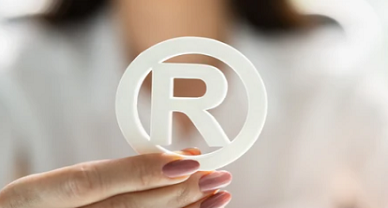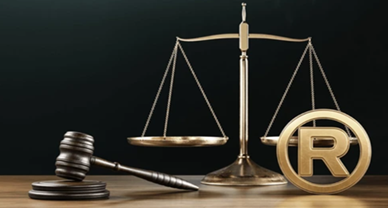“Pink Perfection: The Trademarking Of Barbie’s Signature Hue”
Introduction
With Margot Robbie lighting up our screens in what is arguably the movie of the year, it is the summer of Barbie again; just like it has been, every summer, since her introduction in 1959. Barbie, a name synonymous with an unattainable standard of femininity and the concept of commercial feminism, was designed to captivate the toy market with all its glittery pink magnificence. Conceived by Ruth Handler and named after her own daughter, Barbie has, from its inception, been a driving force behind Mattel’s successful branding efforts, resulting in the sale of over a billion Barbie dolls and the expansion of the franchise into various media, including video games, merchandise, and a live-action movie. This transformation has elevated Barbie to the status of a widely recognized cultural icon. Hence, it is no wonder that the battle for ownership of her trademark is also highly sought after.
Barbie’s unique corporate identity, which includes its name, logo, and slogan, has always been carefully protected by trademarks thanks to Mattel’s vigilance. A straightforward pink sans-serif typeface was used for the 1959 original trademark registration. Over time, the trademark underwent five changes before returning to its original form in 2009. More than 1,000 Barbie trademark registrations are held by Mattel worldwide, covering a wide range of products and services in addition to its primary toy line. Mattel’s portfolio of trademarks demonstrates the brand’s interests, which extend beyond the doll itself.However, these trademark applications are not a disorganised attempt to register every possible name. Rather, they exhibit a deliberate and strategic attitude, concentrating on the business’s most commercially relevant endeavours. This strategy makes sure that rights are protected for these particular categories by considering both the possibility of licencing agreements and the brand’s own usage.
However, it is to note that although the pink colouris also intrinsic and of immense value to the brand, Mattel has not yet registered the trademark rights for it.
SHADES OF PROTECTION: IN ORDER TO CLAIM A COLOUR
To put it simply, colours themselves cannot be copyrighted; they lack copyright protection unless arranged in a specific manner, such as in a painting. The resulting work of art is protected by copyright, which is held by the creator.
To delve a bit deeper, it is possible to establish exclusive rights over the use of colours in specific situations and contexts. However, registering a colour is a difficult procedure that can only be carried out under very certain conditions. According to the law, a colour cannot be protected by a trademark if it is deemed “functional,” whether for utilitarian or aesthetic purposes. When a colour is required for the purpose, calibre, or cost of a product, it is considered utilitarian. A colour is considered aesthetically functional if its exclusive use significantly disadvantages competitors.For instance,the makers of Pepto Bismol were denied the trademark over the colour pink due to the colour’s “therapeutic value” in the treatment for stomach issues. The pink hue is due to the addition of red dye to bismuth subsalicylate, chosen to instil less fear in the minds of little children.
[Image Sources: Shutterstock]
The original expression or fixation of ideas in literary, artistic, musical, dramatic, and other creative works is protected by copyright. This means that anything like the colour pink, a particular shade of pink, or the idea of employing a particular shade of pink in a particular creation cannot be protected by copyright. Copyright, however, can protect a specific creative work, such a unique artistic production that uses the colour pink and isn’t a substantial replica of another work. The use of the hue pink within that particular work may be shielded by copyright. However, using the colour pink in a completely unrelated work would not be considered a copyright infringement.For example, Barbie even if trademarks pink would not be able to sue Vanish detergent for using the colour in its packaging.
Conversely, trademarks are intended to protect “brand identifiers” that customers use to recognise and distinguish one seller’s goods and services from another. These “brand identifiers” that can be registered as trademarks include any combination of letters, slogans, logos, images, animations, shapes, sounds, scents, and even colours. However, a trademark needs to be distinctive in order to be eligible for registration and legal protection. In other words, consumers must be able to use the mark to distinguish the products and services of one seller from those of another. This distinctiveness can be inherent, as in the case of “Colgate” being inherently distinctive for toothpaste because the word has no apparent connection to toothpaste, allowing consumers to easily differentiate the products and services from those of other companies.
Words, logos, and slogans are conventional and widely recognized trademarks. Consumers are accustomed to using these elements as markers to identify and differentiate between products and services. For instance, consider words like “McDonald’s” along with its iconic ‘golden arches’ logo and the catchy slogan “I’m lovin’ it,” or the “Everest Spices” paired with the distinctive ‘brand name in white against a red background’and the “Taste Mein Best, Mummy Aur Everest” slogan.In contrast, shapes, sounds, smells, and colours are less common as trademarks because consumers are not as familiar with using these elements on their own to identify and distinguish goods and services. The U.S. Supreme Court has recognised that a trademark can, in some circumstances, protect a colour, but only if the colour has acquired “secondary meaning.” In other words, it needs to be a colour that distinguishes and defines a certain brand, thereby revealing the brand’s identity. Therefore, in order for a colour to be trademarked, the majority of customers must strongly identify that colour with the good or service, leading them to associate that particular colour with that particular company instantly. Consequently, a colour can only be linked to a good or service through trademark registration if the general public has gradually come to associate the colour with that good or service due to its “consistent use.”
Due to a compilation of all these factors, intellectual property offices and courts often demand that lesscommon or non-traditional types of trademarks prove a relatively high level of acquired distinctiveness before granting trademark registration and enforceability. The public interest in preventing enterprises from monopolising a certain colour makes trademark registration a difficult procedure.There are only about 1,867 distinct Pantone colours, and if numerous brands lay claim to specific colours, we could eventually exhaust the available options. This could make it challenging for consumers to differentiate between subtle shade variations claimed by different brands. However, it would be possible to register that colour as a trademark if the owner can show that customer perception of the colour has changed over time and via extensive use.Top of Form
THE REIGN OF BLUE, PURPLE AND RED
The robin’s-egg blue tint that Tiffany is known for, especially when it comes to its boxes, has been successfully trademarked.It’s worth noting that this colour is not only trademarked, a status it has held since 1998, but it also possesses its own designated Pantone number: 1837, which corresponds to the year of the company’s founding. Tiffany packages its jewellery in special blue boxes, using a trademarked shade of light blue created by the company for its own wares. It has its own name –Tiffany blue. Any jeweller using that particular shade to package its boxes would be liable of violating said trademark.
In a 2022 UK High Court ruling[1], involving Cadbury’s trade mark for the colour purple, the court has set a guide line regarding the registrability of colours as trade marks in the UK. It specifies that a colour must be a distinguishable symbol, able to be represented graphically, and able to set one company’s products or services apart from another. Certain requirements, such as self-containment, objectivity, accessibility, consistency, specificity, and precision, must be met by the trademark application. This guarantees that the protection claim isn’t overly general or ambiguous. A well-known colour reference, such as a Pantone or RAL number, should be included in the trademark application.Accordingly, a trademark can be protected for a specific colour shade but not for all hues of that shade because doing so would give rise to an unduly vague or wide claim. Trade mark protection is only allowed for specific shades of green; it cannot be awarded for all shades of green due to the excessive range and vagueness that would result from doing so. For the application to be successful, it is therefore imperative that one gives a clear and detailed explanation of how the hue will be used. Even if it is as simple as saying that the colour will be used throughout the product, this description should specify how the colour will be used on the product or its packaging.
Cadbury was successful in protecting its claim against Nestle to register its colour purple on the whole of the surface of the chocolate bar, eclairs, and liquidchocolate. The verdict stated that shade of purple had acquired a distinctive character and people associate it with Cadbury chocolates. Data, in the form of a public survey, demonstrated that people connected the colour to Cadbury chocolate.
However, the conflict can be drawn out and difficult, as it was in the case of Christian Louboutin. The court decided in the Louboutin v. Yves Saint Laurent[2]case that shoes with a red body and a red sole were not covered by Louboutin’s Red Sole Mark, which is registered with the USPTO. Thus, the all-red, monochrome shoe design by Yves Saint Laurent was not a violation.Louboutin also faced challenges in securing the Red Sole Mark from the Japan Patent Office where they unsuccessfully sued Eizo[3], a Japanese shoe brand, for rubber shoes with red soles.The Tokyo Appeal Board concluded that red-coloured heels and shoes had been widely available in Japan prior to Louboutin’s 1996 introduction.
However, in 2022, the Beijing Intellectual Property Court ruled in Louboutin’s favour, safeguarding their Red Sole Mark. This time Louboutin had initiated legal action against Guangdong Wanlima Industrial Company whose high heels with a red bottom design closely resembled Louboutin’s.This case took accordance of Article 6(1) of China’s Anti-Unfair Competition law, which prohibits the sale of products that bear resemblance similar enough to generate confusion to those of other brandswith a “certain influence.” The Beijing Court recognized Louboutin as a highly reputable brand with significant sales and media coverage in China, meeting the criteria for a brand with “certain influence.” Guangdong’s remarkably similar red bottom design increased the likelihood of consumer confusion about the shoe’s source or connection to Louboutin. Ultimately, Guangdong was ordered to pay Louboutin over one million dollars in damages.
The viability of Tiffany blue was in doubt in 2011, when a court ruled that French shoe designer Christian Louboutin could not trademark his red bottomed shoes. Recognizing the potential threat to its own trademark, Tiffany submitted a brief with the court supporting Louboutin’s claim and with Louboutin’s court victory on the colour trademark issue, Tiffany’s right to claim the exclusive use of Tiffany Blue gained legal support and set a precedent.
WHY THE HASSLE? THE NEED FOR TUSSLE
People’s perceptions of products can be influenced by colours. To evoke specific psychological reactions, a colour might be associated with objects in a metaphorical or figurative sense. For instance, while green is frequently used for healthy or organic options, blue is utilised for water bottles and filters, therefore it is possible to contend that some colour combinations or aesthetic qualities mesh well together. Similarly colours that are vivid and appealing immediately stand out to the viewer. Some colour combinations highlight contrast and can improve the readability of text. Some products employ special hues to set them apart from the competitors. These products can include consumer goods as well as industrial machinery. Sometimes, these colours are used to differentiate packaging.For instance, Dominos puts its pizza in a blue and white box, while Pizza Hut does so in a red box. Products may also come in widely recognised packaging designs. For instance, laundry detergent packaging frequently uses the colours blue, orange, and yellow. Despite having the same colour scheme, the label and packaging could be very different. Similar packaging forms, colours, and label layouts can occasionally lead to misunderstanding among customers. If the packaging is too similar, a customer could get confused and mistakenly purchase the wrong item.
A trademark’s colour and a brand’s colour are not the same. The legal protection of colours is not always ensured by the inclusion of TM or ® markings on a brand’s image. For example, the TM and ® symbols on the logos of McDonald’s and Starbucks denote that the respective firm owns the picture, symbol, word, or a combination of these components.A trademark is registered within the jurisdiction of the respective trademark office’s location. Trademarks are location-specific and require separate applications in each country where protection is desired. Each jurisdiction has the right to acknowledge and safeguard trademark rights in a way that aligns with its policy objectives. While the term “international trademark rights” denotes a collection of trademark rights in various jurisdictions, the presence and enforceability of these rights vary independently in each jurisdiction and are not typically interconnected. Consequently, Mattel’s effort to trademark the colour pink would yield different results based on the specific jurisdiction in question.
THE CASE FOR MATTEL
Therefore, if Mattel were to try to prevent third parties from using “Barbie Pink” as a trademark, it would be susceptible to certain restrictions based on the probability of confusion factors. The primary issue would be the similarity of the marks and the relevance of the products and services. Mattel will not have exclusive rights to all shades of pink; at most, it can claim ownership over the specific shade of pink known as “Barbie Pink” and those shades strikingly similar to it. Additionally, these rights would generally extend to items associated with dolls and their accessories.The court would consider prior usage and legal precedent because Mattel has made significant efforts to prove that pink is more than merely a colour Barbie wears. Barbie has sported various shades of pink for many years, with Pantone 219C – a colour created by blending “magenta and pink” – being the most prominent among them. The colour “Barbie Pink” (Pantone 219C) is frequently used on Barbie’s dream homes, vehicles, and packaging, among other things. Due to its consistent and long-lasting use, people have come to identify this specific shade with Mattel’s Barbie brand. Mattel has made use of this connection, as evidenced by their recent billboard advertisement for the upcoming Barbie movie, which featured an entirely “Barbie Pink” background with only the film’s release date, “July 21,” written in white.Moreover, in terms of functionality, the colour primarily serves as a visual identifier and decorative element for Barbie, offering no functional advantages to the dolls or their accessories.
Finally, in order to maintain these rights, Mattel must enforce them.An example of Mattel taking action to protect its rights is evident in a lawsuit it filed against a party that was selling “Barbie-Que” snacks, alleging that the snack maker used colours associated with the Barbie brand. Mattel is also known for its legal battle with US rock band Aqua in the late 90s over their song “Barbie Girl,” claiming that the band imitated Barbie by using a colour scheme of white and distinctive pink colours. While Mattel did not win the case due to First Amendment considerations, Mattel’s determination to protect its rights with regard to Barbie Pink is still evident.
However, the absence of registered colours for Mattel does not portray the complete picture, as trademark rights are acquired through the application of a mark, and not exclusively through its registration. Therefore, Mattel can still seeklegal action when third parties employ this specific pink under certain circumstances, owing to the substantial positive reputation it has accumulated over the years. The excitement generated by the Barbie movie has inspired unrelated brands to subtly reference Barbie in their marketing campaigns, even without an official partnership with Mattel. For example, Not on The High Street launched an advertising campaign featuring a pink background and slogans like “TOTALLY COINCIDENTAL PINK FRIDAY SALE” alongside their own brand name. This form of utilization evidently acknowledges the hype surrounding the Barbie movie but is probably distant enough from Mattel’s rights to avoid any objections from the company. As long as Mattel continues to use and protect its Barbie Pink trademark, it can retain this colour as a significant distinguishing element for its iconic brand.Nonetheless, securing formal registration for these rights could further reinforce Mattel’s current efforts, although it may also introduce new legal challenges, all worth a touch of pink glittery glamour to Barbie Land.
Author: Shehenaj Sabnam, in case of any queries please contact/write back to us at support@ipandlegalfilings.com or IP & Legal Filing
[1]Cadbury UK Limited V. The Comptroller General Of Patents, Designs, And Trademarks and Société Des Produits Nestlé S.A [2016] EWHC 796 (Ch)
[2] Christian Louboutin S.A. v. Yves Saint Laurent Am., Inc., 778 F. Supp. 2d 445, 449-50 (S.D.N.Y. 2011)
[3]Christian Louboutin S.A. v. Eizo Collection Co., Ltd.Reiwa4(ne)10051]



